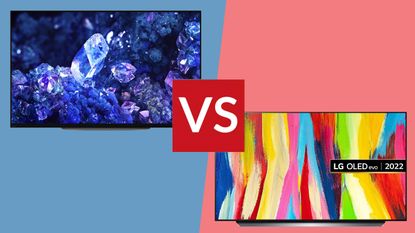

Sony’s OLED range has got rather complicated. In terms of big-screen new models, there's Sony’s A95K ‘Quantum Dot’ OLED models (also known as QD-OLED). The A90J range continues from 2021, meanwhile, representing the brand’s cheaper, non QD-OLED big-screen offering.
Sony’s two smaller OLED screens for 2022, though, are new models again, dubbed the A90K range, and they chiefly differ from 2021’s small Sony models by sporting new high-brightness panels.
Higher brightness is also true of LG’s C2 range, which bring the high brightness panels first introduced on the brand’s flagship 2021 G1 series down to the brand’s mid-range series for the first time (note: but it's classic OLED, not QD-OLED).
So with the Sony A90K starting to arrive in shops and the LG C2 already widely available, join us as we delve deeper into the differences between these two small-screen OLED options to help you figure out which might suit you best.
Sony A90K vs LG C2: Price and models
The Sony A90K is available in two screen sizes: 42- and 48-inches. These sets are officially priced at £1,799 and £1,899 respectively in the UK.
The LG C2 series is available in no less than six different screen sizes: 42-, 48-, 55-, 65-, 77- and 83-inches. These models are available at the time of writing for £1,299, £1,399, £1,699, £2,499, £3,699 and £5,299. These prices can be slightly reduced if you sign up to become an LG ‘member’, but otherwise are consistent across all retailers.
You don’t need to be an accountant to figure out that the 42 and 48-inch LG C2s are significantly cheaper than the A90K options. So clearly we’ll be looking hard in this article for reasons why Sony might argue that its TVs are worth the extra.
Sign up to the T3 newsletter for smarter living straight to your inbox
Get all the latest news, reviews, deals and buying guides on gorgeous tech, home and active products from the T3 experts
Below is a real-time pricing widget comparing the 48-inch models so you can see like-for-like sizes compared:
Sony A90K vs LG C2: Picture Quality

The Sony A90K and LG C2 OLED series are both built around new high-brightness panels.
At the time of writing, though, there’s some confusion about this when it comes to LG’s 42- and 48-inch models. For starters, LG has admitted that due to supply issues many of its 42-inch C2 TVs currently aren’t using the latest higher-brightness panels. Full production of these in 42-inch size is expected to begin ‘after the second quarter’ in 2022.
LG also says, though, that it doesn’t promote its 42- and 48-inch C2 models as being able to deliver anywhere near as much of a brightness jump over their C1 predecessors as the bigger models due to their much higher pixel density.
This pixel density argument muddies the waters here, since while Sony clearly talks about the A90K sporting high-luminance panels, it doesn’t join LG in talking down the potential of these panels to make much difference due to supposed high-pixel density issues.
The same panel supply issues that have plagued LG’s initial 42-inch C2 rollout are perhaps responsible for Sony only just starting to ship its A90K range. This, together with the fact that early C2 models aren’t necessarily representative of the series' performance at other screen sizes or the 42-inch screens going forward, means we can’t provide real-world side-by-side comparisons here. We can, though, talk through where the key differences will lie based on extensive experience of Sony and LG’s OLED TVs over the past year or two.
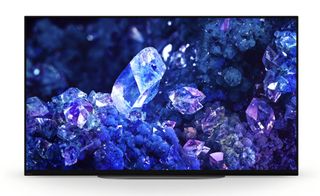
The processing driving the two panels is very different: the A90K gets Sony’s Cognitive XR processor, while the C2 gets LG’s latest Alpha 9 Gen 5 processor.
The Cognitive XR processor shook things up on its launch in 2021 by focusing on manipulating many aspects of the image to try and make it look more natural in the sense of how your eyes perceive the real world. So, for instance, it figures out what the main focus of each image is and gives it slightly more emphasis, just as your eyes tend to as they take in the real world. The image’s sense of depth and three-dimensionality is slightly enhanced too.
LG seems to have been influenced by Sony’s efforts to some extent; certainly its new processor has introduced new object-based image detection and depth enhancements that feel similar in intention to the Cognitive XR processor’s approach. LG has also enhanced its HD-to-4K upscaling for the C2, actually removing a step from the process procedure that was found to potentially add noise to the upscaled images.
Sony has introduced refinements of its own to the Cognitive XR engine, though, and Sony’s Triluminos Pro is also on hand to enhance both the range and subtlety of its colour handling.
Sony also uses an image temperature mapping system to help it enhance the image’s contrast, XR Clarity, while motion is handled superbly by Sony’s peerless MotionFlow processing system.
Overall for video sources the A90K has the tools to edge the C2 for video picture quality. The LG C2, though, has the tools to take the win for gaming graphics. Which is handy, given that the 42- and 48-inch screen sizes covered by the A90K range may well be popular with gamers.
The Sony set, for starters, won’t let you enjoy 4K/120Hz games in Dolby Vision while the LG C2 range will. LG also provides support for the HGiG HDR gaming initiative, as well as the AMD Freesync Premium and Nvidia G-Sync variable refresh rate systems. All features that can palpably improve the gaming experience that the A90K doesn’t support.
The A90K does, to be fair, support a couple of exclusive-to-Sony features when connected to a PS5, in the shape of automatic HDR Tone Mapping, where the console detects which Sony TV it is attached to and automatically selects the best HDR settings, and an Auto Genre picture adjustment mode. But LG adds, finally, a handy Gaming Optimiser interface that provides gamers with a mixture of game-related picture information and adjustments in a simple, easy-to-navigate special menu – including picture presets that do a great job of adjusting playback to suit different types of games.
Sony A90K vs LG C2: Sound quality
There’s clear water between the A90K and C2 when it comes to audio, chiefly because of major differences in the way the two ranges actually produce their sound.
The C2 adopts a relatively straightforward approach of cramming speakers into the chunky bits of their rears. These speakers deliver a respectable 40W of total power (20W of bass, 10W to left and rights) in a 2.2-channel configuration, and LG’s impressive AI Sound Pro processor is on hand to increase the soundstage’s potency versus the slightly lacklustre (though again improved from 2021’s C1 series) Dolby Atmos mode.
The LG C2’s sound also manages to keep escalating nicely during action scenes compared with the C1's earlier equivalent, which tended to start fading when the going got particularly tough.
Despite the improvements, though, the C2’s sound still can’t compete with the A90K’s so-called Acoustic Surface Audio+ system. This cunningly sees a pair of sizeable actuators turning the screen itself into a forward-facing audio system, with a separate centrally-mounted subwoofer on hand to add more bass to proceedings.
A decent 25W of power feeds into the A90K’s innovative audio set-up, combining with the forward-facing speakers to fill even large rooms with strikingly open, dynamic, clean, impactful and immersive sound. There’s support for Dolby Atmos playback too, and where bass can sound cramped on the C2, it tends to rumble away cleanly and convincingly on the A90K.
Sony A90K vs LG C2: Design and Features
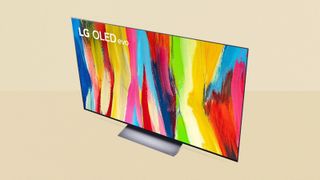
The A90K is a much more ‘statement’ product in design terms than the LG C2. The Sony's ‘One Slate’ design presents a seriously premium-looking flush finish to the screen and bezel, backed up with a metal frame. The sleek, beautifully built desktop stand, meanwhile, can either support the screen sat right down on top of it, for a gorgeously minimalistic, elegant look, or lift the screen up a few centimetres to accommodate a small subwoofer or raise the screen to a more comfortable height for gaming setups.
While the whole of the C2 range features the same ultra-thin screen bezels, the stands used vary according to screen size. The 42-inch model gets two feet, the 48-inch sits on a wide silver pedestal, while the 55-to-77-inch models get a narrow pedestal stand, and the 83-inch goes back to a wider pedestal stand similar to the one provided with the 48-inch.
All the C2 designs look reasonably elegant and premium, but for us the Sony A90K has a clear aesthetic edge over its rival. Especially when the screen is set to its lowest mounting position.
When it comes to features, while both TV ranges feature OLED panels with high-brightness technologies, those panels are driven by the Cognitive Processor XR on the A90s, and the Alpha 9 Gen 5 processor on the C2, delivering differences we’ve given you a flavour of in the picture quality section.
Both screens support the Dolby Vision HDR format on top of the de rigueur HDR10 and HLG systems, and both support 4K/120Hz signals from cutting-edge consoles and PCs* as well as variable refresh rate (VRR). This support is only possible on two of the A90K’s HDMI ports versus four on the C2's selection, though. *(not with Dolby Vision in the Sony though, that's reserve of LG only).
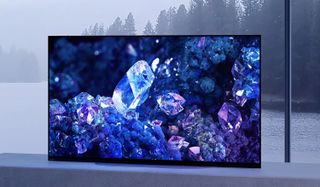
Smart features on the A90K are provided by Google TV, while the C2's smart features are provided by the latest version of LG’s legendary webOS system. Normally the presence of webOS would hand the C2 an easy victory here. Google TV, though, is a handy improvement in terms of ease of use and interface presentation over its Android TV predecessor, while webOS is still struggling to master its controversial 2021 switch to a full-screen home page and new, less user-friendly and logical structure.
The A90K offers YouView, while the LG C2 offers FreeView Play, both of which provide ways to access all the main UK terrestrial broadcaster catch-up apps.
The A90K also offers access to Sony’s new Bravia Core streaming service, complete with support for uniquely high streaming bandwidths. And just by buying an A90K you will have earned yourself the right to access free Bravia Core movies.
One final potentially significant feature in the LG C2’s favour, though, is that it supports wireless Dolby Atmos audio streaming to LG’s latest premium soundbars
Sony A90K vs LG C2: Verdict
Both of these TV ranges are excellent in different ways, and both offer specific features that will endear them to different buyers.
If you’re after a TV that can offer slightly better video processing and delivers audio impressive enough that you may not need to consider adding an external soundbar, the Sony A90K is the OLED TV for you.
The LG C2, however, offers superior support for cutting-edge gaming, and easily the best picture quality LG has ever delivered from its mid-range OLED range. Which is saying something, given that LG’s C series have long been renowned as impressive performers.
In the end, the C2’s substantial price advantage might ultimately tempt more people that way in such a tight overall contest, but the Sony A90K certainly has enough unique features to both justify the price and lure in buyers attracted by the impeccable all-round performance.
John Archer has been testing TVs and AV gear for over 25 years, having worked on Home Cinema Choice magazine. He's a contributor to Forbes, TechRadar, Trusted Reviews, Wired and many more places – if you've owned a TV in the last couple of decades, John's probably reviewed it somewhere. He's seen so many hot new technologies come and go, like tears in the rain.
-
 Best Christmas gifts 2024: wellness, fragrances, grooming and more
Best Christmas gifts 2024: wellness, fragrances, grooming and moreIf you're struggling to find the perfect gift, you've come to the right place
By Lizzie Wilmot Published
-
 This iconic KitchenAid stand mixer is $170 off in early Black Friday deal
This iconic KitchenAid stand mixer is $170 off in early Black Friday dealGet 37% off the KitchenAid Stand Mixer in Best Buy’s Black Friday sale
By Bethan Girdler-Maslen Published
-
 Early Black Friday deal sees price of massive 75-inch TV slashed
Early Black Friday deal sees price of massive 75-inch TV slashedYou'll even get a free copy of NBA 2k25
By Sam Cross Published
-
 Your Samsung TV just got its biggest free upgrade yet
Your Samsung TV just got its biggest free upgrade yetOne UI is rolling out to the latest Samsung TVs now
By Britta O'Boyle Published
-
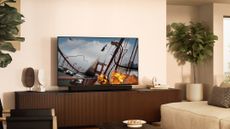 Best Sony TVs 2024: from Bravia 9 Mini LED to Bravia 8 OLED and beyond
Best Sony TVs 2024: from Bravia 9 Mini LED to Bravia 8 OLED and beyondExplaining Sony's range of 2024 TVs, including new naming strategy and range of technologies
By Chris Hall Published
-
 This ultra-bright mini-LED TV is the display of my dreams
This ultra-bright mini-LED TV is the display of my dreamsTCL's next flagship looks fantastic
By Andy Sansom Published
-
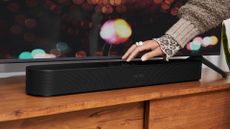 Best soundbar for small TVs 2024: clearer, deeper TV sound in any space
Best soundbar for small TVs 2024: clearer, deeper TV sound in any spaceThe best soundbars for small TVs 2024 can bring you big sound from a compact unit
By Simon Lucas Last updated
-
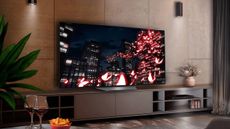 LG TV owners just got Apple TV+ for free
LG TV owners just got Apple TV+ for freeNo matter if you have an LG OLED TV or an LED model, you just got Apple TV+ for free
By Robert Jones Published
-
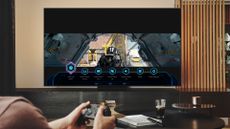 Samsung 4K TV owners are getting a brilliant free gaming upgrade
Samsung 4K TV owners are getting a brilliant free gaming upgradeBrilliant news for recent Samsung TV buyers: cloud gaming is no longer limited to 2022 models
By Carrie Marshall Published
-
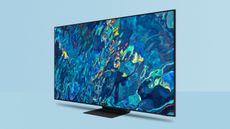 Samsung smart TV owners just got a welcome image upgrade
Samsung smart TV owners just got a welcome image upgradeHDR10+ comes to the Apple TV app on Samsung Smart TVs
By Carrie Marshall Published